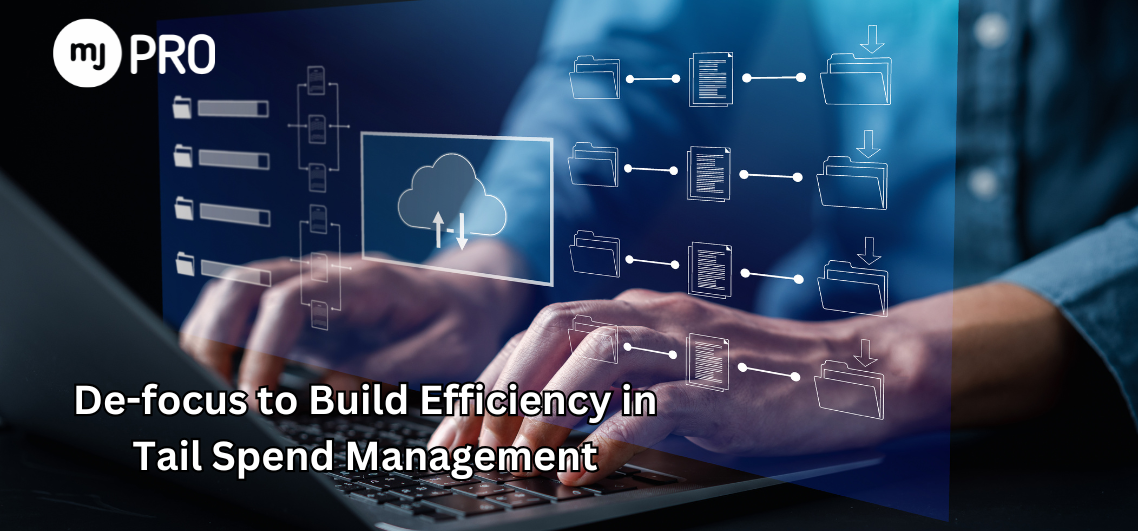

Procurement teams often find themselves caught in a paradox: spending disproportionate time managing low-value purchases. These numerous small transactions, known as tail spend, can account for up to 80% of an organization’s transactions but only about 20% of the total spend. This imbalance consumes valuable resources that could drive strategic initiatives instead.
Manufacturing organizations face this challenge daily—managing hundreds of routine purchases essential for operations but not critical enough to merit dedicated attention.
Your team’s dedicated resources should focus on strategic decisions, not processing office supplies and maintenance parts. Modern procurement needs a fresh approach to tail spend management.
Understanding Tail Spend
Tail spend covers your organization’s non-strategic, low-value purchases. These C-category buys might include office supplies, maintenance items, or small equipment parts.
Let’s say a manufacturing plant needs various small maintenance parts throughout the year. Each purchase might be under $1000, but collectively they form a significant portion of transaction volume.
So, while each transaction seems minor, their cumulative impact on time, resources, and efficiency adds up quickly.
The Hidden Costs
Managing tail spend drains more resources than you might realize. Your procurement professionals spend hours processing purchase orders for basic supplies when they could focus on strategic sourcing or supplier relationship management.
Consider a procurement manager spending two hours approving multiple low-value purchases. That’s two hours they’re not spending on negotiating better terms with key suppliers or identifying cost-saving opportunities in major contracts.
Why Traditional Approaches Fall Short
Most organizations handle tail spend in one of three ways:
• Providing it with minimal attention
• Managing it alongside strategic purchases (wasting valuable resources)
• Using basic automation tools (addressing only part of the problem)
None of these approaches fully addresses the challenge. A manufacturing company might automate purchase orders but still need staff to manage supplier relationships, handle exceptions, and ensure compliance.
Procurement Outsourcing and Collaboration
The most effective approach involves collaborating with experienced and capable service providers. These partners should offer both procurement expertise through dedicated resources and technology for automation.
The outsourcing model can be customized based on your needs and feasibility. Service delivery can be onsite, offsite, or hybrid. A proper governance structure ensures effectiveness, measured through impact parameters like compliance and efficiency.
The Technology-Plus-Resource Solution
Modern tail spend management requires both technology and human expertise working in tandem. The technology component handles routine tasks, automating everything from purchase order creation and routing to basic approval workflows. Advanced systems manage invoice matching and compliance checks with minimal human intervention.
Yet technology alone can’t address every procurement challenge. You need capable procurement professionals to handle exceptions and special cases that fall outside standard parameters.
Dedicated professionals manage supplier relationships, identify opportunities for spend consolidation, and ensure procurement best practices are followed consistently.
Last but not least, they ensure timely delivery without which the entire procurement process is rendered untenable. This combined approach creates a robust system that’s both efficient and adaptable to unique business needs.
Benefits of the Combined Approach
This dual approach delivers multiple advantages. Your organization gains:
• Reduced processing time and costs
• Better spend visibility and control
• Freed-up internal resources for strategic initiatives
• Consistent compliance and governance
• Professional supplier management
For instance, companies that use digital tools to manage tail spend can cut their annual expenditures by 5% to 10% on average—a significant amount, especially for global companies with total expenditures in the billions.
Planning a Successful Implementation Strategy
Successful tail spend management transformation requires careful planning and systematic execution. You’ll need to start by analyzing your current tail spend patterns to understand where the opportunities lie.
Next, identify specific categories suitable for the new management approach—not all low-value purchases are created equal. Clear performance metrics help track progress and demonstrate value. Remember to plan for change management, as your team will need time to adapt to new processes.
Finally, choose a partner who offers both robust technology and capable procurement resources. This comprehensive approach ensures a smooth transition and sustainable results.
The Critical Role of Human Expertise in Automation
Technology alone can’t address all tail spend challenges. Capable procurement professionals bring essential judgment and insight to the process.
They know when to make exceptions to standard procedures, how to handle unique purchasing requirements, and ways to optimize supplier relationships. They spot opportunities for spend consolidation that automated systems might miss.
Think of it like automated investing platforms—while the technology handles routine transactions efficiently, you still need financial expertise for strategy and special situations. This human element ensures your tail spend management remains flexible and responsive to changing business needs.
Final Thoughts
Smart organizations do more with less. You need efficient systems to handle routine purchases while your core team drives high-value initiatives.
At mjPRO, we understand this balance. Our solution combines procurement technology with capable resources to handle your tail spend comprehensively. You get both the efficiency of automation and the flexibility of human expertise, allowing your team to focus on strategic initiatives that drive real value.
If you’re ready to level up your tail spend management, get in touch with us today. Let’s talk about how we can help.